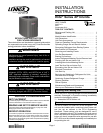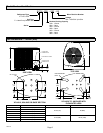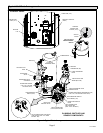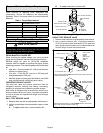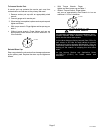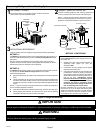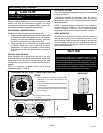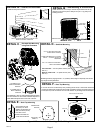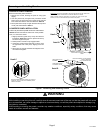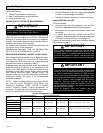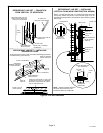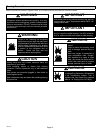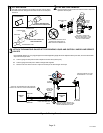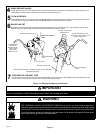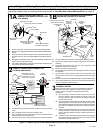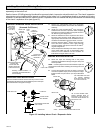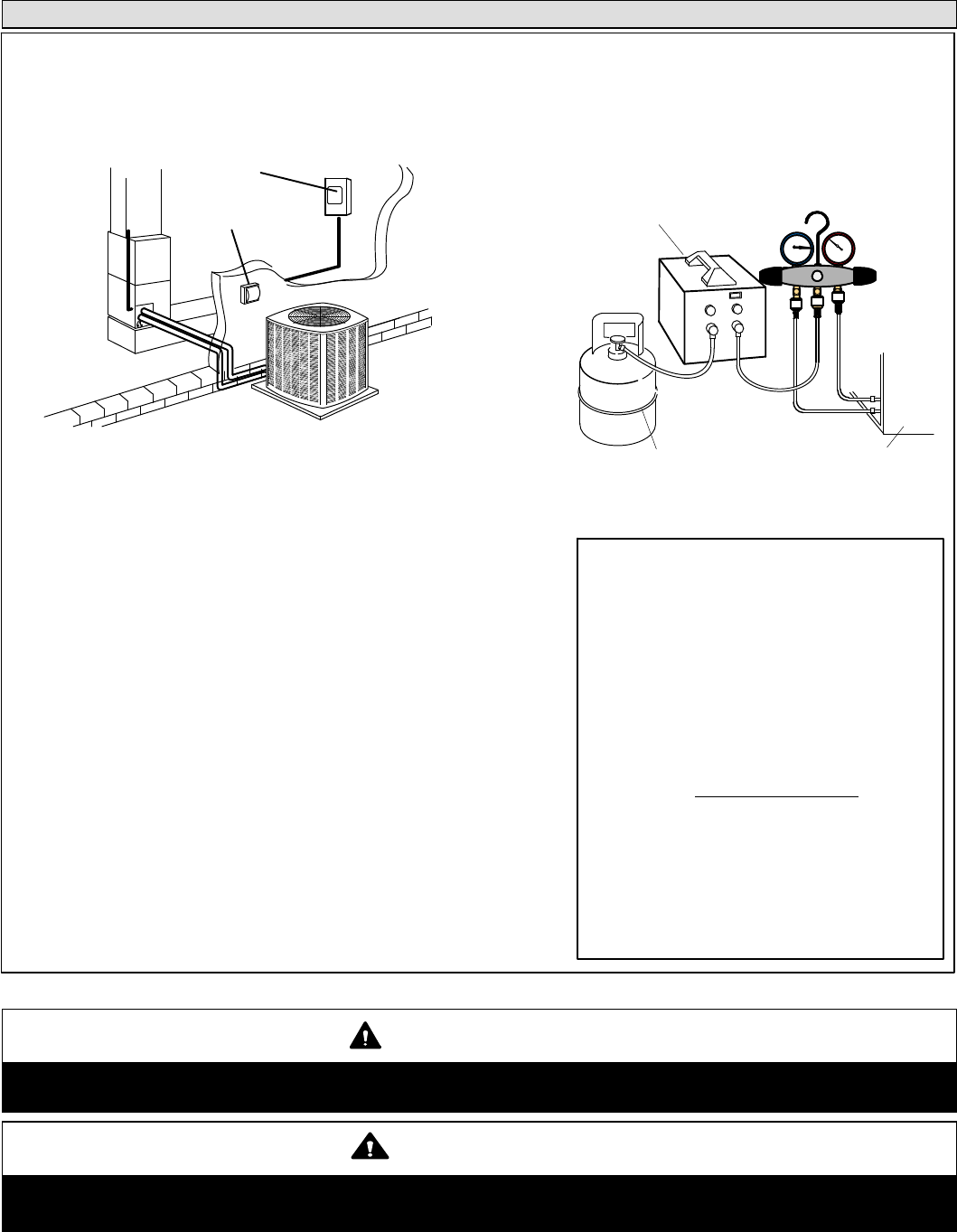
Page 6
506728−01
Recovering Refrigerant from Existing System
Disconnect all power to the existing outdoor unit at the disconnect
switch and/or main fuse box/breaker panel.
DISCONNECT POWER
CONNECT MANIFOLD GAUGE SET
MANIFOLD GAUGES
RECOVERY MACHINE
CLEAN RECOVERY
CYLINDER
OUTDOOR UNIT
HIGH
LOW
Connect a manifold gauge set, clean recovery cylinder and a
recovery machine to the service ports of the existing unit.
METHOD 1:
Use Method 1 if the existing outdoor unit is not equipped with shut−off valves, or
if the unit is not operational and you plan to use the existing HCFC−22 to flush
the system.
Recover all HCFC−22 refrigerant from the existing system using a recovery
machine and clean recovery cylinder. Check gauges after shutdown to confirm
that the entire system is completely void of refrigerant.
METHOD 2:
Use Method 2 if the existing outdoor unit is equipped with manual shut−off valves,
and you plan to use new HCFC−22 refrigerant to flush the system.
Perform the following task:
A Start the existing HCFC−22 system in the cooling mode and close the liquid line
valve.
B Use the compressor to pump as much of the existing HCFC−22 refrigerant into
the outdoor unit until the outdoor system is full. Turn the outdoor unit main power
OFF and use a recovery machine to remove the remaining refrigerant from the
system.
NOTE Ċ It may be necessary to bypass the low pressure switches (if equipped) to
ensure complete refrigerant evacuation.
C When the low side system pressures reach 0 psig, close the vapor line valve.
D Check gauges after shutdown to confirm that the valves are not allowing
refrigerant to flow back into the low side of the system.
Remove existing HCFC−22 refrigerant using one of the following procedures:
RECOVERING REFRIGERANT
1
2
3
DISCONNECT
SWITCH
MAIN FUSE
BOX/BREAKER
PANEL
NOTE Ċ Use the recovery machine instructions to make
the correct manifold gauge set connections for recovery
refrigerant. The illustration below is a typical connection.
NOTE Ċ When using Method 2, the listed devices
below could prevent full system charge recovery into
the outdoor unit:
S Outdoor unit’s high or low−pressure switches (if
applicable) when tripped can cycle the
compressor OFF.
S Compressor can stop pumping due to tripped
internal pressure relief valve.
S Compressor has internal vacuum protection that
is designed to unload the scrolls (compressor
stops pumping) when the pressure ratio meets a
certain value or when the suction pressure is as
high as 20 psig. (Compressor suction
pressures should never be allowed to go into
a vacuum. Prolonged operation at low suction
pressures will result in overheating of the
scrolls and permanent damage to the scroll
tips, drive bearings and internal seals.)
Once the compressor can not pump down to a lower
pressure due to any of the above mentioned system
conditions, shut off the vapor valve. Turn OFF the main
power to unit and use a recovery machine to recover
any refrigerant left in the indoor coil and line set.
METHOD 2 LIMITATIONS
Figure 4. Refrigerant Recovery
IMPORTANT
The Environmental Protection Agency (EPA) prohibits the intentional venting of HFC refrigerants during maintenance,
service, repair and disposal of appliance. Approved methods of recovery, recycling or reclaiming must be followed.
WARNING
Refrigerant can be harmful if it is inhaled. Refrigerant must be used and recovered responsibly.
Failure to follow this warning may result in personal injury or death.



